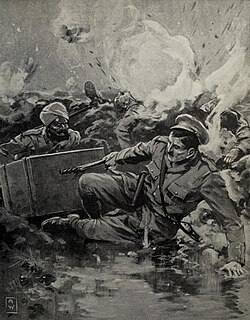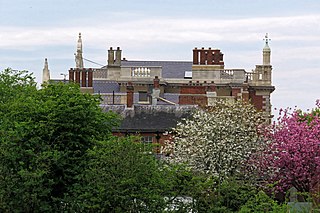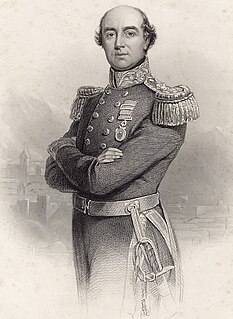Related Research Articles
Earl of Sussex is a title that has been created several times in the Peerages of England, Great Britain, and the United Kingdom. The early Earls of Arundel were often also called Earls of Sussex.

There have been six baronetcies created for persons with the surname Smyth, two in the Baronetage of England, one in the Baronetage of Great Britain, one in the Baronetage of Ireland and two in the Baronetage of the United Kingdom. One creation is extant as of 2010.
The High Sheriff of Essex was an ancient sheriff title originating in the time of the Angles, not long after the invasion of the Kingdom of England, which was in existence for around a thousand years. On 1 April 1974, under the provisions of the Local Government Act 1972, the title of Sheriff of Essex was retitled High Sheriff of Essex. The high shrievalties are the oldest secular titles under the Crown in England and Wales, their purpose being to represent the monarch at a local level, historically in the shires.
Sir Thomas Bendysh, 2nd Baronet (c.1607–1674), served as the English ambassador to the Ottoman sultanate in the mid-17th century.
There have been nine baronetcies created for persons with the surname Lloyd, three in the Baronetage of England, three in the Baronetage of Great Britain and three in the Baronetage of the United Kingdom. Two of the creations are extant as of 2010.
There have been six Cunningham baronetcies:

There have been two baronetcies created for people with the surname Barrington. As of 2014 one creation is extant.

There have been three baronetcies created for members of the Blakiston family of Blakiston, County Durham, two in the Baronetage of England and one in the Baronetage of Great Britain. One creation is extant as of 2008.

There have been twenty baronetcies created for persons with the surname Williams, eight in the Baronetage of England, three in the Baronetage of Great Britain and nine in the Baronetage of the United Kingdom. Only five of the creations are extant as of 2017..
The Richardson, later Stewart-Richardson Baronetcy, of Pencaitland in the County of Haddington, is a title in the Baronetage of Nova Scotia. It was created on 13 November 1630 for Robert Richardson, with remainder to his heirs male whatsoever. The title was dormant from c. 1640–c. 1678, 1752–c. 1783 and 1821–1837. The thirteenth Baronet was the son of Elizabeth, eldest daughter and co-heir of James Stewart, and assumed the additional surname of Stewart.
There have been four baronetcies created for persons with the surname Rich, two in the Baronetage of England, one in the Baronetage of Great Britain and one in the Baronetage of the United Kingdom. As of 2008 three of the creations are extinct while one is dormant.
There have been three baronetcies created for persons with the surname Wiseman, all in the Baronetage of England. Only one creation is extant as of 2008.
There have been two baronetcies created for persons with the surname Yelverton, both in the Baronetage of England.
There have been five baronetcies created for members of Clan Ramsay, four in the Baronetage of Nova Scotia and one in the Baronetage of the United Kingdom. The baronetcy in the Baronetage of the United Kingdom is extant as of 2021.

There have been three baronetcies created for descendants of the ancient Norman family of Molyneux who were granted extensive estates in Lancashire after the Norman Conquest.

Sir Thomas Gooch, 2nd Baronet (1674–1754) was an English bishop.

The Petre Baronetcy, of Cranham Hall in the County of Essex, was a title in the Baronetage of England. It was created in circa 1642 for Francis Petre. The third Baronet was a Jesuit and close adviser to King James II. The title became extinct on the death of the fifth Baronet in 1722.
The Vandeput Baronetcy, of Twickenham in the County of Middlesex, was a title in the Baronetage of Great Britain. It was created on 7 November 1723 for Peter Vandeput. The title became extinct on the death of the second Baronet in 1784.

There have been seven baronetcies created for persons with the surname Herbert, three in the Baronetage of England, one in the Baronetage of Ireland and three in the Baronetage of the United Kingdom. All creations are extinct.
Sir Richard Franklyn, 1st Baronet of Moor Park, Hertfordshire was an English landowner and politician who sat in the House of Commons from 1661 to 1679.
References
| Baronetage of England | ||
|---|---|---|
| Preceded by Mordaunt baronets | Bendish baronets 29 June 1611 | Succeeded by Wynn baronets |